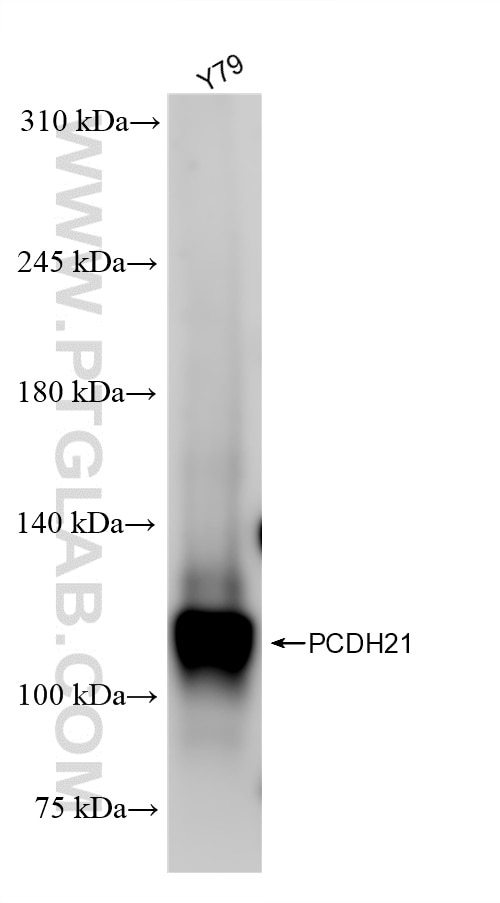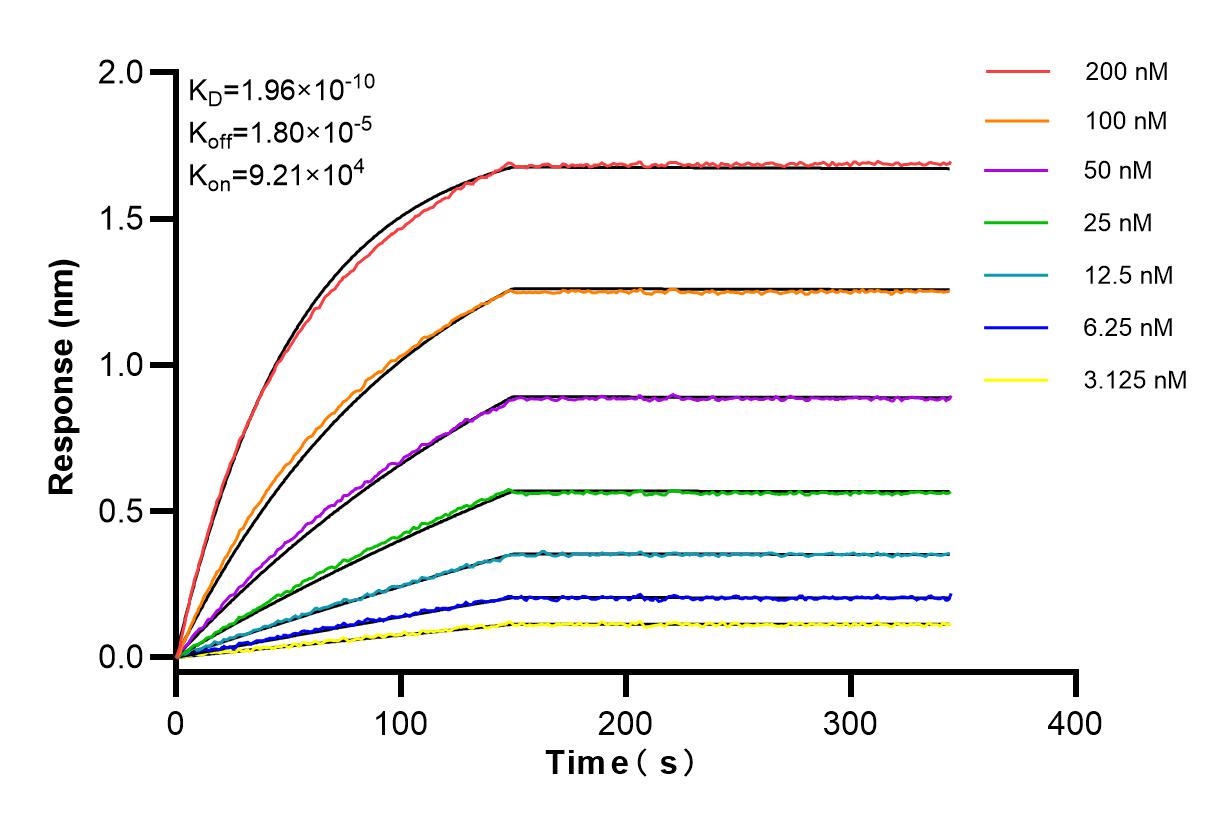Tested Applications
| Positive WB detected in | Y79 cells |
Recommended dilution
| Application | Dilution |
|---|---|
| Western Blot (WB) | WB : 1:1000-1:4000 |
| It is recommended that this reagent should be titrated in each testing system to obtain optimal results. | |
| Sample-dependent, Check data in validation data gallery. | |
Product Information
84084-3-RR targets PCDH21 in WB, ELISA applications and shows reactivity with human samples.
| Tested Reactivity | human |
| Host / Isotype | Rabbit / IgG |
| Class | Recombinant |
| Type | Antibody |
| Immunogen |
CatNo: Ag11451 Product name: Recombinant human PCDH21 protein Source: e coli.-derived, PGEX-4T Tag: GST Domain: 396-745 aa of BC038799 Sequence: NLQLVGPRGIFRVVPQTVLNEAQVTIIVENSAAIDFEKSKVLTFKLLAVEVNTPEKFSSTADVVIQLLDTNDNVPKFDSLYYVARIPENAPGGSSVVAVTAVDPDTGPWGEVKYSTYGTGADLFLIHPSTGLIYTQPWASLDAEATARYNFYVKAEDMEGKYSVAEVFITLLDVNDHPPQFGKSVQKKTMVLGTPVKIEAIDEDAEEPNNLVDYSITHAEPANVFDINSHTGEIWLKNSIRSLDALHNITPGRDCLWSLEVQAKDRGSPSFSTTALLKIDITDAEVRRLRYMKNSNFPGTTKSVRKPKFKPKKPHSSQGLFLHPHCEIALFNLSNVNLYSRVFQGAAQAS Predict reactive species |
| Full Name | protocadherin 21 |
| Calculated Molecular Weight | 745 aa, 82 kDa |
| Observed Molecular Weight | 120 kDa |
| GenBank Accession Number | BC038799 |
| Gene Symbol | PCDH21 |
| Gene ID (NCBI) | 92211 |
| RRID | AB_3671652 |
| Conjugate | Unconjugated |
| Form | Liquid |
| Purification Method | Protein A purification |
| UNIPROT ID | Q96JP9 |
| Storage Buffer | PBS with 0.02% sodium azide and 50% glycerol, pH 7.3. |
| Storage Conditions | Store at -20°C. Stable for one year after shipment. Aliquoting is unnecessary for -20oC storage. 20ul sizes contain 0.1% BSA. |
Background Information
Protocadherins, which constitute the largest subgroup within the cadherin superfamily, are predominantly expressed in the nervous system and are probably involved in the regulation of neuronal recognition and connectivity (PMID: 17936607; 12231349; 17133224). PCDH21 (protocadherin 21), also known as CDHR1, is a photoreceptor-specific cadherin protein containing six ECs and an intracellular domain. The mutations of PCDH21 cause recessive retinal degeneration and autosomal recessive cone-rod dystrophy in humans (PMID: 16288196; PMID: 20805371). The full length of the PCDH21 protein is 120 kDa, the N-terminal soluble fragment is 95 kDa, and the C-terminal fragment is 25 kDa (PMID: 35066146; PMID: 18654668; PMID: 33964272).
Protocols
| Product Specific Protocols | |
|---|---|
| WB protocol for PCDH21 antibody 84084-3-RR | Download protocol |
| Standard Protocols | |
|---|---|
| Click here to view our Standard Protocols |






